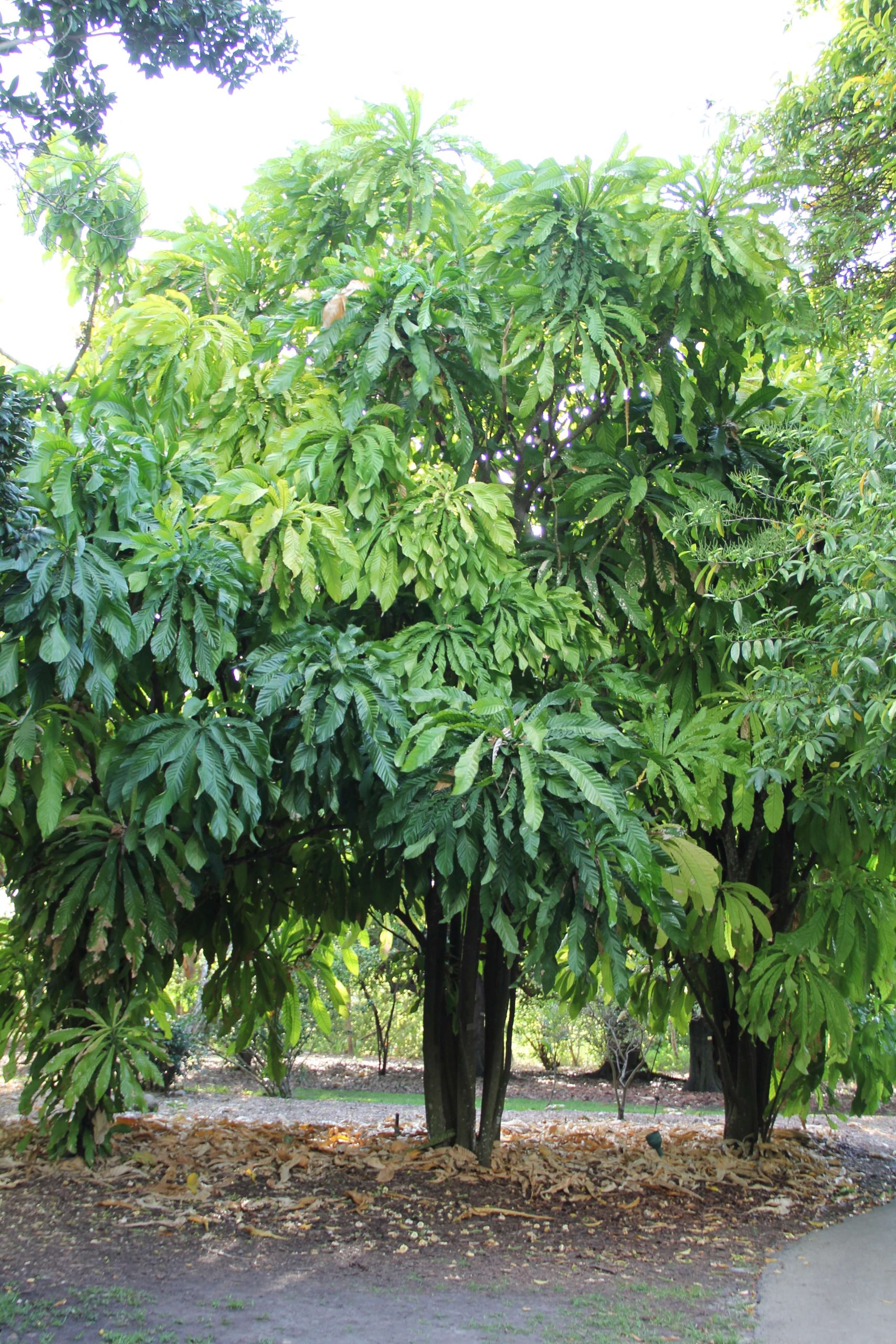Description
Gustavia superba (Membrillo) is Spanish for quince, but the fruit is unrelated to this small to medium-sized tropical forest understory tree which can reach 30 feet in height. It has high branches and the top branches resemble the growth of a palm tree. It can also assume a shrub growth form. Additionally, the leaves are green, simple, alternate, oblong, large, 20 by 5 inches, and grouped at the branch ends in whorls. Moreover, the flowers are large, fragrant, variably-colored blooms (white, pink, purple). The flowers have stamens arranged in a circle, about 4 inches across, and are borne on the trunk (cauliflory). Also, the flowers attract bees and thus Membrillo is known as a honey tree.
Furthermore, the fruits are pear-shaped, about 4 x 3 inches; the hard green shell contains a yellowish-orange pulp and up to 20 seeds; at maturity the fruit is yellow. Monkeys and rodents eat the fruits. Seeds and cutting are used for propagation. The fruit pulp is edible, usually boiled beforehand, and is rich in vitamins. The large leaves are eaten by animals and used to to make a medicinal tea. The wood is used in construction.
Gustavia superba (Membrillo) prefers well-drained soils with organic matter. With its large shiny leaves and unusual flowers and fruits, Membrillo is suggested as a shade, accent or specimen tree in courtyards and gardens, in the conservatory or grown in a pot.






